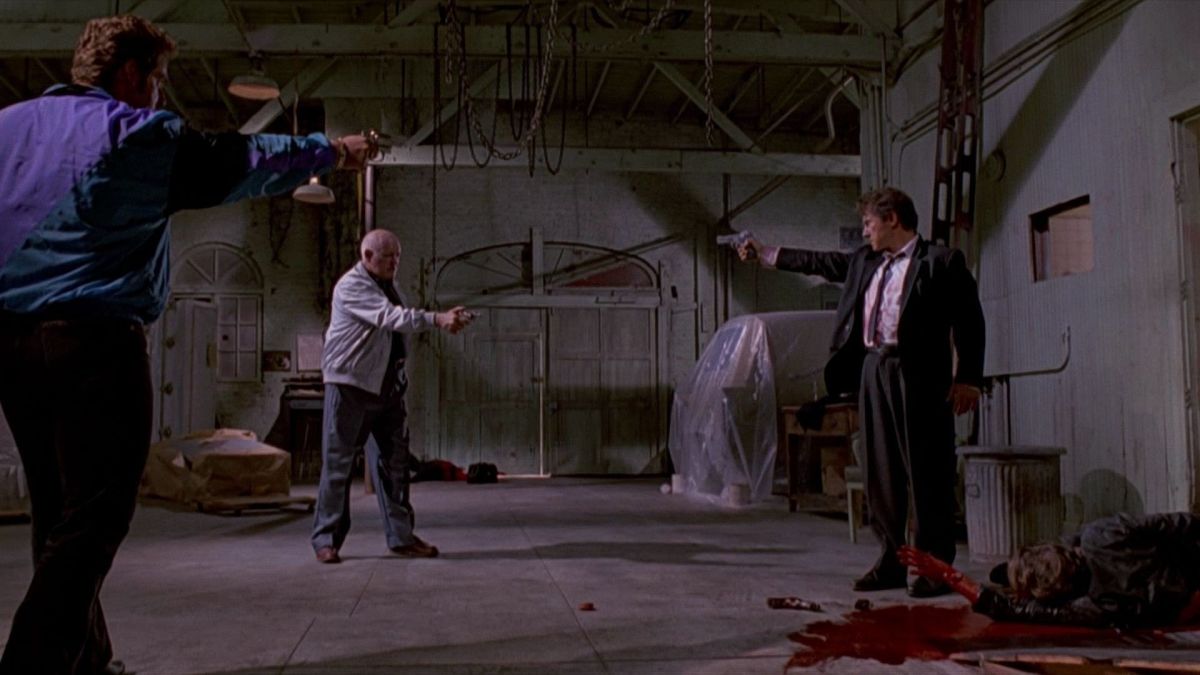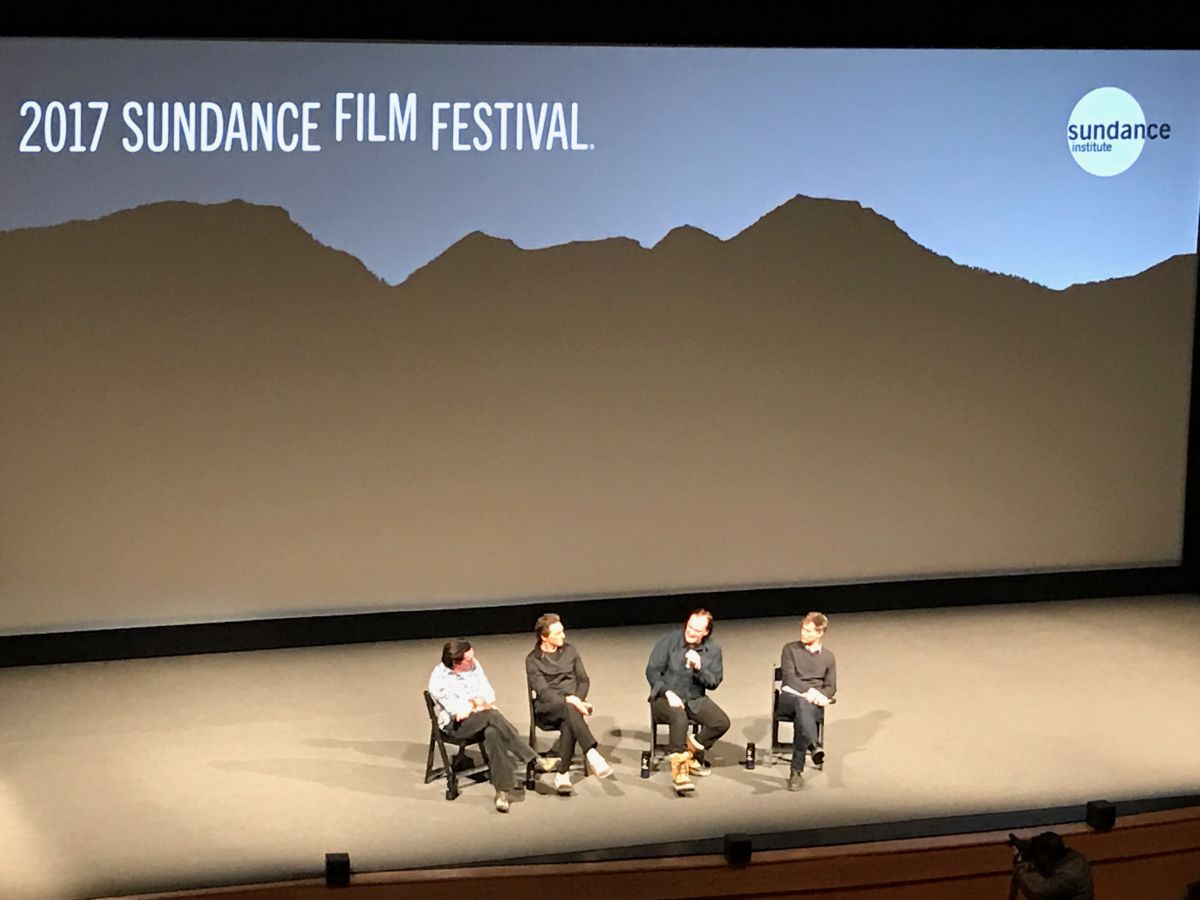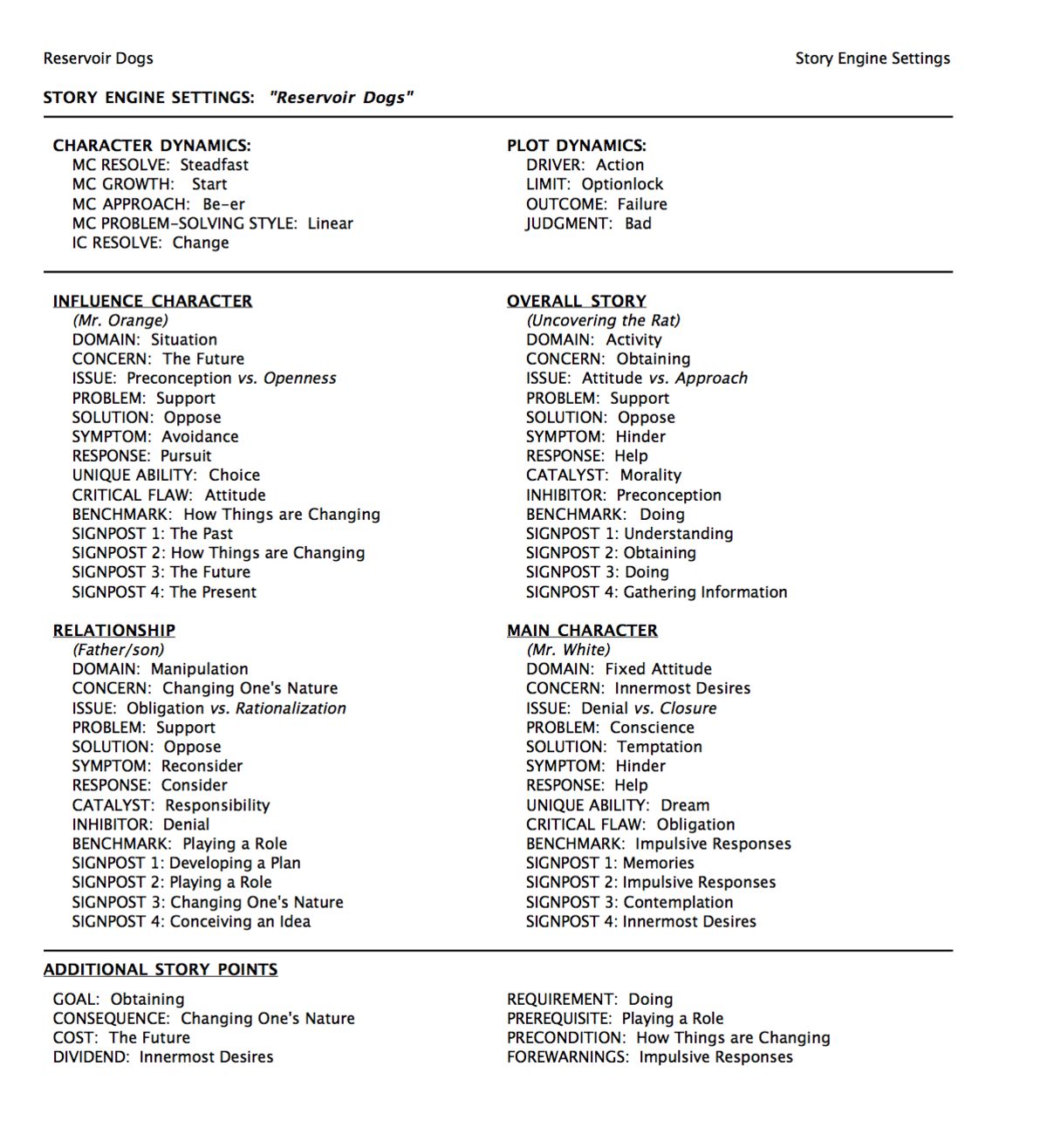
Rethinking And Revisiting The Reservoir Dogs Analysis
As understanding grows, so too does the appreciation of a well-crafted and thoughtful narrative.
Twenty-five years since the debut of Tarantino's directorial debut, Reservoir Dogs. Twenty-three years since the initial release of the Dramatica theory of story. More than two decades of study and research into the complex fabric of narrative results in a greater understanding of what makes this film so great.
The official Dramatica analysis of Reservoir Dogs is wrong.
During the 2017 Sundance Film Festival last week, I attended a special screening of the heist classic in Park City, Utah. Featuring a brand new 35mm print and followed by an extended QnA with not only director Quentin Tarantino and producer Lawrence Bender, but also Mr. Blonde Michael Madsen himself, the event reignited my passion for great storytelling and filmmaking.
Reaching for my phone quickly after, I dialed up the official Dramatica analysis of Reservoir Dogs to look over the story dynamics and deep narrative structure. I love challenging myself to figure out exactly where the key points of conflict emanate within a great story. Imagine my concern when I read that the Objective Story Issue was Self-Interest and the Objective Story Problem Pursuit. When and where do selfish motives instigate conflict in this film? If anything, the underlying theme of the film is paranoia and suspicion.
Does this look like a Problem of Pursuit?
Or is it more an Objective Story Problem of Support?
By standing off against Joe (Lawrence Tierney) Mr. White (Harvey Keitel) is saying I'm on Mr. Orange's side. Shoot him and I shoot you. By aiming his pistol at Mr. White, "Nice Guy" Eddie (Chris Penn) is saying That's my dad. You shoot Joe, I shoot you. By continuing to point his gun at the fallen Mr. Orange (Tim Roth), Joe is saying This guy is a cop. He supports the other side.
The conflict in this film is all about problems of Support. And it flows up through the Dramatica Table of Story Elements to create Objective Story Issues of Attitude . I mean, who better to portray a problematic attitude than Mr. Blonde Michael Madsen himself?[^1]
"What you're supposed to do is act like a fuckin' professional."
That's calling out a problem with Attitude, not Self-Interest.
Selecting this key story point over Pursuit resets the entire storyform. Instead of a Relationship Story Issue of Commitment, we now identify Obligation as the central issue between Mr. White and Mr. Orange. White feels obligated to take care of White and get him to a hospital.
"You're not gonna fuckin' die, kid."
The anxiety and strain on the relationship during the final moments is all about honoring that obligation between father and son—a bond set during that opening scene in the car.[^2]
[^2]: The father/son relationship between Mr. White and Mr. Orange covered in another film analysis blog and in an L.A. Times article interview with Tarantino.
If you're through givin' me your amateur opinion, lie back and listen. I'm takin' you back to the rendezvous, Joe's gonna get you a doctor...the doctor's gonna fix you up and...you're gonna be okay.
Admitting and Avoiding Narrative Structure
In reference to the father/son dynamic between Mr. White and Mr. Orange, Tarantino admitted to realizing the substance of their relationship after writing the screenplay. A facilitator in the Sundance Directors Lab suggested the young director go through the script and jot down the subtext for every line of dialogue. It was during this process that he exhumed the father/son dynamic between White and Orange and even between Joe and White. Tarantino found the process quite illuminating and productive—and then never wanted to do anything like it ever again!
As far as Tarantino was concerned, his only responsibility from that day forward was to create a great movie; leave the deep thematic analysis to the experts…
…which obviously worked great for him. However, it doesn't discount the reality that the reason over 1200 braved sub-zero weather to stand outside in anticipation of Reservoir Dogs was because there was a substantial Relationship Story Throughline for them to grab onto and make their own.
The simple heist film paid attention to both the head-line and the heart-line.
Complete stories require Four Throughlines: Objective Story, Main Character, Obstacle Character, and Relationship Story. Reservoir Dogs survives, and elevates itself above and beyond other heist films because it supplies all four of these Throughlines.
Whether Tarantino likes it or not.
For more on what he discovered during the screening, check out 16 Things Quentin Tarantino Learned from Rewatching 'Reservoir Dogs' at Sundance
Clues to Success
The new--more accurate--storyform for Reservoir Dogs is set by the following story points:
- Main Character Resolve: Steadfast
- Main Character Growth: Stop
- Main Characer Approach: Be-er
- Main Character Mental Sex: Male
- Story Driver: Action
- Story Continuum: Spacetime
- Story Outcome: Failure
- Story Judgment: Bad
- Objective Story Domain: Activity
- Objective Story Concern: Obtaining
- Objective Story Issue: Attitude
- Objective Story Problem: Support
Mr. White a Be-er? Definitely.
Remember that Dramatica sees the Main Character Throughline as separate from the character's role in the Objective Story Throughline . Without a doubt, Mr. White participates externally in the Activity Objective Story Throughine. When it comes to his own personal issues—problems and conflicts that he takes with him into any story—it is this unspoken code that he stands by without fail.
"I don't buy it. Me and Joe go back a long time. I can tell ya, straight up, Joe definitely didn't have anything to do with this bullshit."
This gives Mr. White a Main Character Problem of Conscience instead of Help. If anything is driving White to do the things he does, it is this sense of doing what is right by Orange. He is motivated to Help in the Objective Story Throughline but the true downfall in his personal Throughline comes from this sense of conscience.
His Growth as a Steadfast character is to get everyone else to Start thinking with a level head.
"What's done is done, I need you cool. Are you cool?"
Holding out for others to start calming down...
The storyform also grants him a Main Character Issue of Denial which further plays into the idea that White simply has a hard time letting go of those things he believes in (Main Character Throughline in Mind ).
This also places Orange in a Universe with an Obstacle Character Concern of The Future . How else would you describe someone bleeding out on a warehouse floor, unable to even move? The impact and conflict that Orange instills on everyone else around him stems from this external Universe he simply can't escape.
And it challenges White to grow and battle against his Conscience.
Orange eventually reveals his allegiance (Obstacle Character Solution of Oppose and Obstacle Character Resolve of Changed*) which destroys the father/son relationship between he and White (Relationship Story Solution of Oppose*). This breakdown leaves White no other alternative than to Remain Steadfast and do what is right—shoot Mr. Orange in the face (Main Character Problem of Conscience*).
Narrative structure may be something found after the fact—after the writing and rewriting and after the accolades and box office success. Or it can be something found at the beginning and at the start of the journey. Writers can focus on getting the narrative first…they only need to know where to start looking.
[^1]: Madsen confessed to auditioning for Mr. Pink (Steve Buscemi's character) during the QnA. He only spent a few moments with Keitel on the set of Thelma and Louise and really wanted to work with him. Bender and Tarantino let him audition out of respect—but then called several hours to say he's in, but only if he accepts the role of Mr. Blonde. Madsen thankfully agreed.
Download the FREE e-book Never Trust a Hero
Don't miss out on the latest in narrative theory and storytelling with artificial intelligence. Subscribe to the Narrative First newsletter below and receive a link to download the 20-page e-book, Never Trust a Hero.




